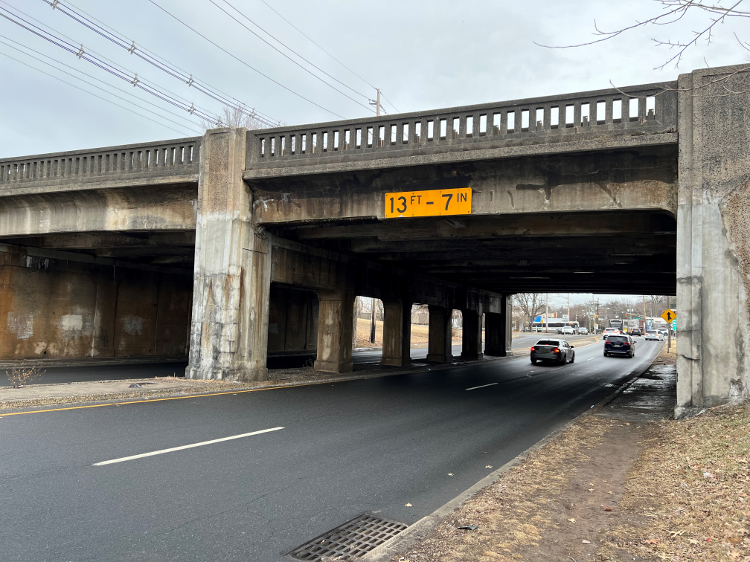Route 4 Grand Avenue Bridge Replacement
Project Description
New Jersey Department of Transportation (NJDOT) identified NJ Route 4 over Grand Avenue (Structure No. 0206-179) to be structurally deficient due to poor condition of the deck and functionally obsolete due to substandard vertical underclearance and lateral clearances. The interchange geometry includes substandard acceleration/deceleration lane lengths and in addition, the substandard westbound weaving lane length contributes to traffic congestion and increased crash rate.
The Preliminary Preferred Alternative (PPA) proposes to replace the bridge to accommodate three 11' lanes and one 13' shoulder along each direction of Route 4 and to increase the vertical underclearance. Exit and entrance ramp acceleration/deceleration lanes will be lengthened along Route 4. In addition, Grand Avenue will be widened, accommodating a six-lane cross section with a sidewalk on each side of Grand Avenue. The Grand Avenue northbound entrance ramp to Route 4 westbound ramp will be eliminated and accommodated via the existing Grand Avenue lanes to Route 4 westbound ramp via a new signalized intersection. The Grand Avenue southbound entrance ramp to Route 4 eastbound will be eliminated with the movement accommodated via a new ramp connecting Grand Avenue to Route 4 eastbound.
In accordance with requirements of the Federal Highway Administration's (FHWA) traffic noise regulation (codified at 23 CFR 772), revised effective July 13, 2011, PCA reviewed all project improvements. Based on the percent change in distances between the roadway widening and closest receivers, PCA concluded that the project would not be classified as Type I or II. Therefore, the project would be considered a Type III project. Under 23 CFR 772, Type III projects do not require a noise analysis. Noise was addressed qualitatively within the NJDOT Categorical Exclusion Document (CED).
The project is located within an O3 nonattainment and CO and PM2.5 maintenance area. The project is listed within the approved 2018-2027 Statewide Transportation Improvement Program (STIP) therefore addressing O3. Project improvements were not expected to significantly increase the percentage of heavy-duty diesel vehicles and therefore, the project is not one of PM2.5 concern. However, one project-affected signalized intersection was predicted to operate at Level of Service D or worse under future Build conditions. All operational conditions of the critical intersection fell within acceptable ranges to rely on FWHA's CO Categorical Hot-Spot Findings. Air quality was quantitively addressed within an Air Quality Assessment document, supplemental to the NJDOT CED.
